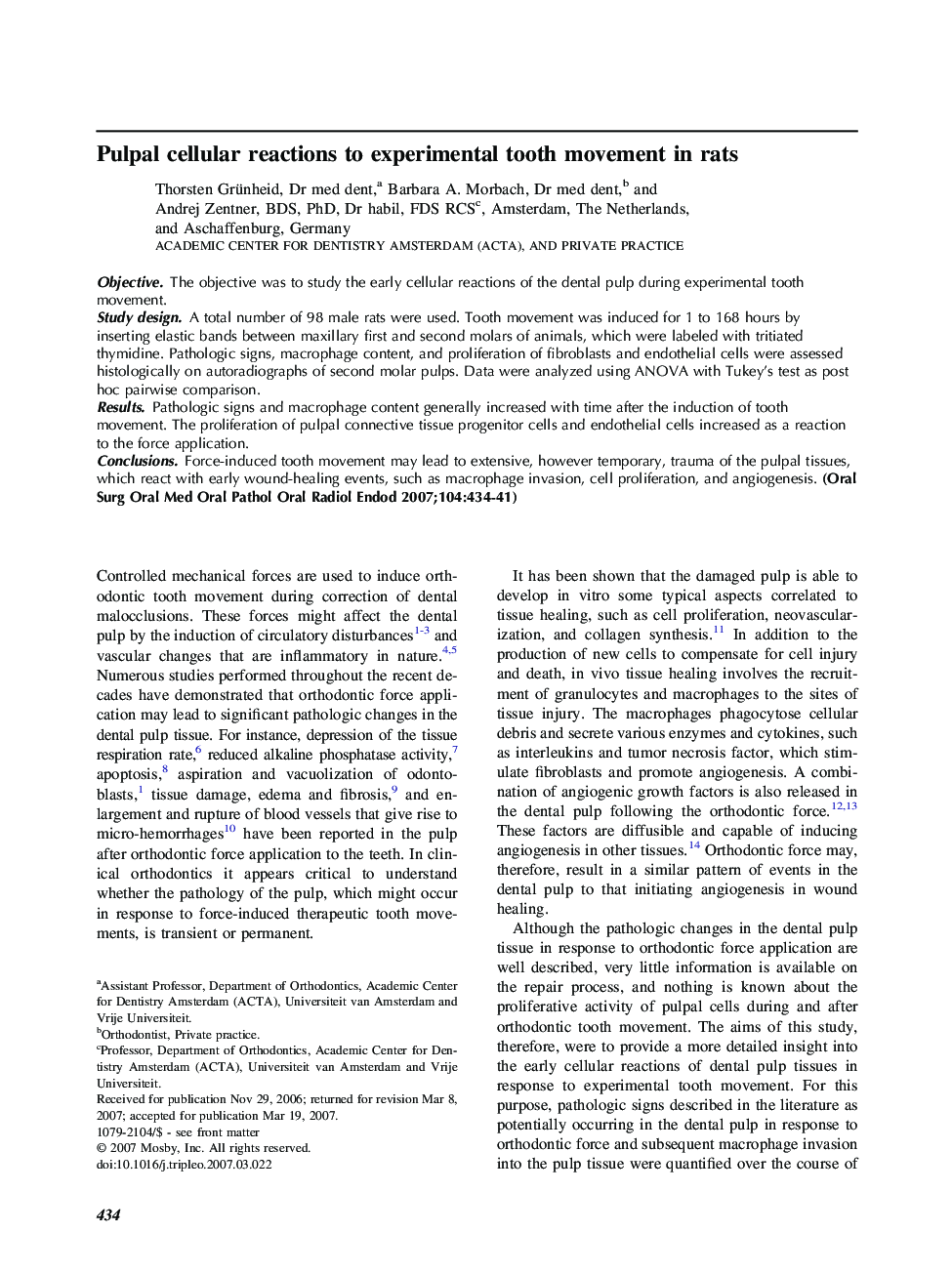| Article ID | Journal | Published Year | Pages | File Type |
|---|---|---|---|---|
| 3169260 | Oral Surgery, Oral Medicine, Oral Pathology, Oral Radiology, and Endodontology | 2007 | 8 Pages |
ObjectiveThe objective was to study the early cellular reactions of the dental pulp during experimental tooth movement.Study designA total number of 98 male rats were used. Tooth movement was induced for 1 to 168 hours by inserting elastic bands between maxillary first and second molars of animals, which were labeled with tritiated thymidine. Pathologic signs, macrophage content, and proliferation of fibroblasts and endothelial cells were assessed histologically on autoradiographs of second molar pulps. Data were analyzed using ANOVA with Tukey’s test as post hoc pairwise comparison.ResultsPathologic signs and macrophage content generally increased with time after the induction of tooth movement. The proliferation of pulpal connective tissue progenitor cells and endothelial cells increased as a reaction to the force application.ConclusionsForce-induced tooth movement may lead to extensive, however temporary, trauma of the pulpal tissues, which react with early wound-healing events, such as macrophage invasion, cell proliferation, and angiogenesis.
